What would women artists of the Jazz Age think of the metaverse?
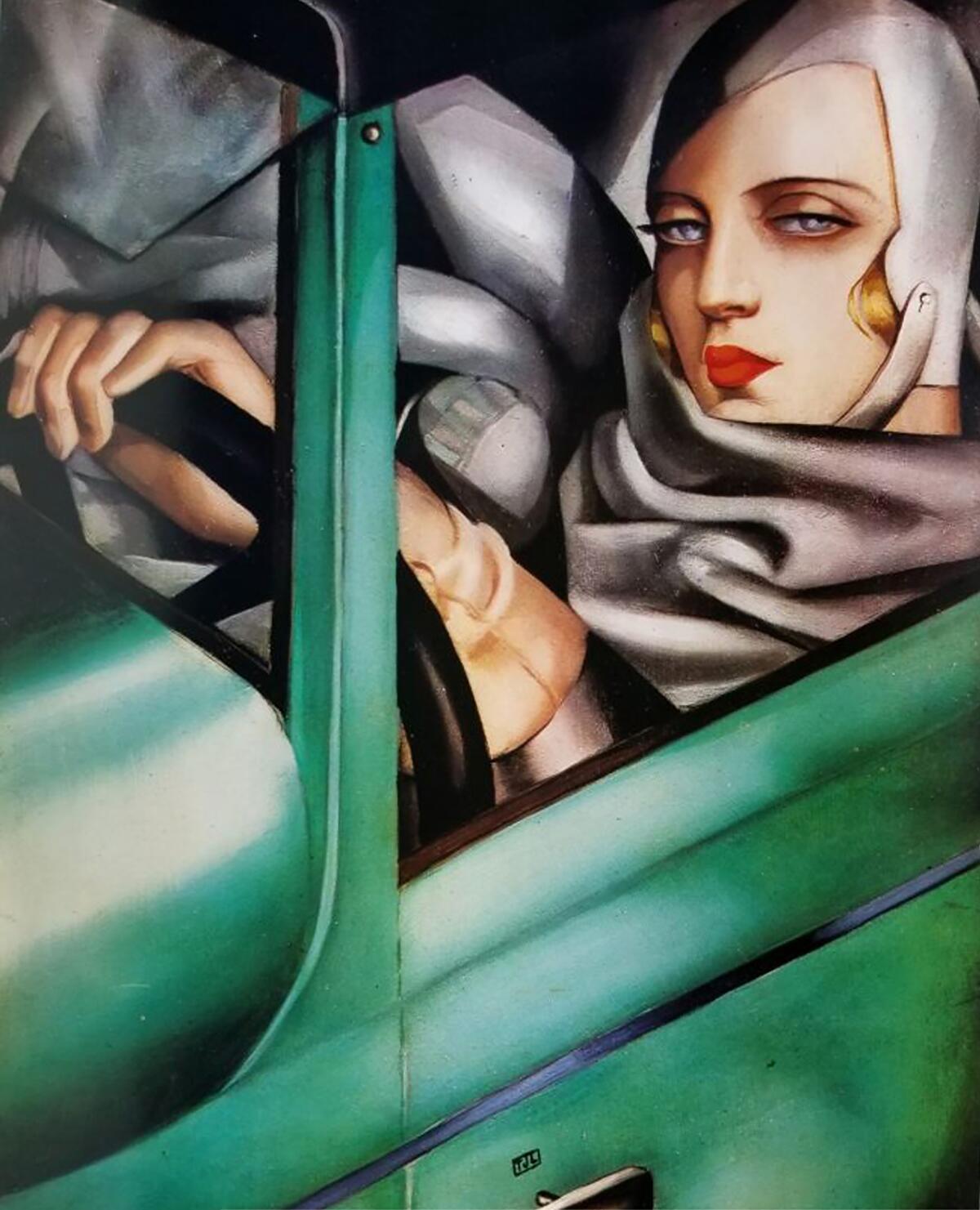
- Share via
Welcome to a mid-February edition of the Essential Arts newsletter. I’m arts and culture writer Jessica Gelt filling in for the irreplaceable Carolina Miranda, who is currently embarked on a top-secret mission to save the world (but leave the paper bereft) on book leave. Speaking of books, I’m almost done with a series of biographies by Judith Mackrell titled “Flappers: Six Women of a Dangerous Generation,” which limns the extraordinary lives of Josephine Baker, Tallulah Bankhead, Diana Cooper, Nancy Cunard, Zelda Fitzgerald and Tamara de Lempicka.
The book got me thinking about what 100 years has meant to women in the arts, so I decided to write a letter to my predecessors addressing a few of today’s unique challenges (I see you, metaverse):
Dear Foremothers,
It’s been 100 years since you began walking the long road of liberating yourselves from the patriarchal confines of the cloistered, proper lives you were expected to live as young women coming of age in the early 20th century, since the catastrophe of WWI enabled you to work en masse outside the home and dream of lives far beyond the limitations of marriage and motherhood.
It’s been 100 years since you became artists and writers of note — the kind to go down in history. Some of you were aided by factors including wealth and the color of your skin. Others among you overcame poverty, or the daily horrors of racism, or countless other injustices. World famous or relatively obscure — you were people who lived richly imaginative lives worthy of aspiring to.
It’s been 100 years since you rebelled on a grand scale — since you drank liquor and smoked cigarettes in public, experimented with illicit drugs, freely slept with multiple partners and discovered the joy and comfort of other women’s bodies. Since you wrote poems, articles and books, hosted raucous dinner parties on the Left Bank, acted and danced on stage and on early Hollywood sets, made your marks on canvases, crossed the Atlantic (many times) on steam ships and shook the very foundations of what it meant to be a modern woman.
You may have wondered what life for women artists and writers would be like a century hence, and I would tell you — if I could just stop doomscrolling on my phone.
If I could put down my laptop, if I could delete my Facebook, Twitter and Instagram apps.
You wrote letters, I Tik Tok.
I’m told that some women younger than me — cut from the digital cloth of Gen Z — would not be able to read the letters you wrote because they cannot decipher the cursive you wrote them in. They might also find it difficult to concentrate for the time it takes to read them, as here, in the 21st century, we are used to consuming our news in 280 characters or less.
So where does that leave us with our art? We’re making plenty of it, and we’re awfully good at it. If there is internet in the fifth dimension, or in heaven, or wherever it is that you are now, you should Google Kristina Wong, Amanda Gorman, Alma Lopez and Michelle Yeoh. The list of astounding female talent goes on and on. Thank you for paving the way.
The patriarchy remains a serious obstacle (can you believe that?). And racism, homophobia and transphobia continue to oppress many women today — as does a lack of adequate childcare and healthcare. Artistic labor is still as undervalued as ever — and the notion of the starving artist has somehow remained a romantic ideal. But, hey, I can wear ripped jeans whenever I want.
If you thought the industrial revolution reconfigured the workforce, you should see the havoc the digital revolution has wreaked on artists’ ability to earn a living. Ever heard of Spotify? And don’t get this writer started on ChatGPT.
But, if I could have one wish these days as a woman striving to create art in this chaotic, warming, deeply inequitable world (besides an immediate correction to all the pain of inequity), it would be for quiet. For the luxury of sitting alone and uninterrupted with my own thoughts — without the ding of an incoming text message, the ping of a Slack from work, the beep of an email, the whir of endless notifications and breaking news alerts.
Sure, I could turn off my phone and hide it deep inside my desk drawer — but I would still know it was there, like Poe’s tell-tale heart, beating out a missive about how I am never alone and how somebody, somewhere always knows where I am and how to reach me.
Which is one of the most damaging states of affairs that I can think of for an artist whose work springs from the autonomy of self and soul. I can never, ever be you: a solitary figure on the deck of a ship in the middle of the ocean, with only a pen and paper as my guide.
With Love,
Jessica
P.S. Read on to discover what happened in the arts this week, as told by your favorite Times team of writers and critics.
Make the most of L.A.
Get our guide to events and happenings in the SoCal arts scene. In your inbox every Monday and Friday morning.
You may occasionally receive promotional content from the Los Angeles Times.
On and off the stage
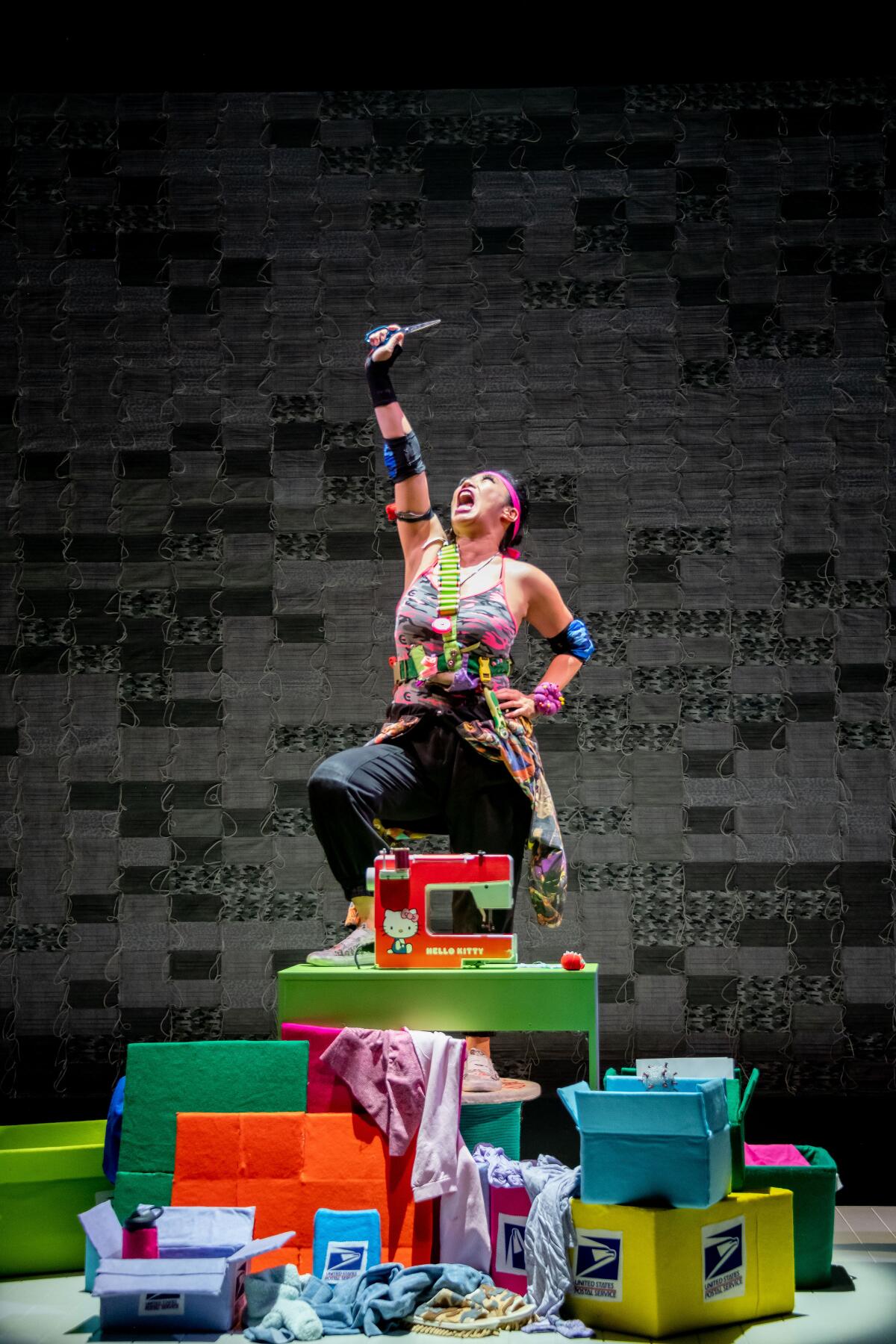
Call it a pre-spring awakening: theater openings are popping up all over town, and our tireless theater critic, Charles McNulty, is taking in as many shows as his schedule allows.
First up: “The First Deep Breath” by playwright and actor Lee Edward Colston II at the Geffen Playhouse. The show clocks in at a little over four hours, and McNulty notes that it’s modeled in the vein of theater’s most famous epic family dramas, including, Eugene O’Neill’s “Long Day’s Journey Into Night” and Tracy Letts’ “August: Osage County.”
“Bigger isn’t always better,” though, notes McNulty, adding that even though Colton’s writing, “is touchingly attentive to the various ways male tenderness can manifest under oppressive conditions,” the show still can’t unpack its “bulging back stories.”
Shakespeare emerges for a win in A Noise Within’s production of “Much Ado About Nothing,” directed by Guillermo Cienfuegos, which achieves madcap gold by focusing on the richness of the play’s story line rather than focusing exclusively on the tart tête-à-tête between lovers Beatrice and Benedick.
“How did Cienfuegos accomplish what some starrier productions have failed to do? His direction helped me appreciate the deeper Shakespearean meaning of the play’s merry ruses,” McNulty writes.
Over at Rogue Machine, the world premiere of Diane Frolov and Susan Justin’s musical “Come Get Maggie” is not yet ready for viewing on planet Earth, writes McNulty.
“Few things are as difficult to pull off as giving birth to a new musical. But launching a rocket to Pluto might be easier than creating a new musical about space aliens,” he begins his review, which notes the “clumsiness in a production that is overmatched in both resources and imagination.”
McNulty was far more appreciative of comedian and performance artist Kristina Wong’s solo show “Kristina Wong, Sweatshop Overlord” at the Kirk Douglas Theatre, which is a co-production of Center Theatre Group and East West Players.
The show travels with Wong as she relives the 500-plus days she spent running a Facebook group called the Auntie Sewing Squad to make masks for vulnerable communities and front-line workers during the worst of the COVID crisis. Calling the performance a “must-see” show, McNulty noted that Wong “is delivering the pandemic debriefing I didn’t know how badly I needed.”
I had the pleasure of sitting with Wong before the show opened to talk about how she turned her pivotal pandemic experience into a play. At first she thought there was no way that anybody would want to watch a performance about the pandemic, but then in September 2021, New York Theatre Workshop came calling. Wong soon became Pulitzer Prize finalist for drama, and earlier this month she was awarded the Doris Duke Artist Award — a $550,000 no-strings-attached gift, and a serious vote of confidence in her work.
“I can actually dream much bigger and think about bigger projects,” Wong told me, adding that the bulk of the funds will be set aside for retirement.
In the galleries and at the art fairs

L.A. artist Alake Shilling custom-designed a soccer ball called “Buggy Ball, 2023” for use in an interactive project at Frieze. During sessions on a soccer field near the exhibition tent, members of the Los Angeles Football Club will school participants in the sport using Shilling’s special ball emblazoned with a cuddly pink bear.
The installation’s buzzword, writes arts reporter Deborah Vankin, is “accessibility.”
“I always tell people I wish art was as popular as sports,” Shilling says. “Everyone knows who Michael Jordan is, but not fine artists off the top of their heads. ... I feel like public objects are great for community engagement, and I hope this project opens a door for people to become interested in fine art.”
Vankin was also on the scene during Frieze’s buzzy opening day on Thursday. She and Times photographer Dania Maxwell interviewed artists, collectors, gallerists and more attending the art fair. Live vicariously through their photo essay.
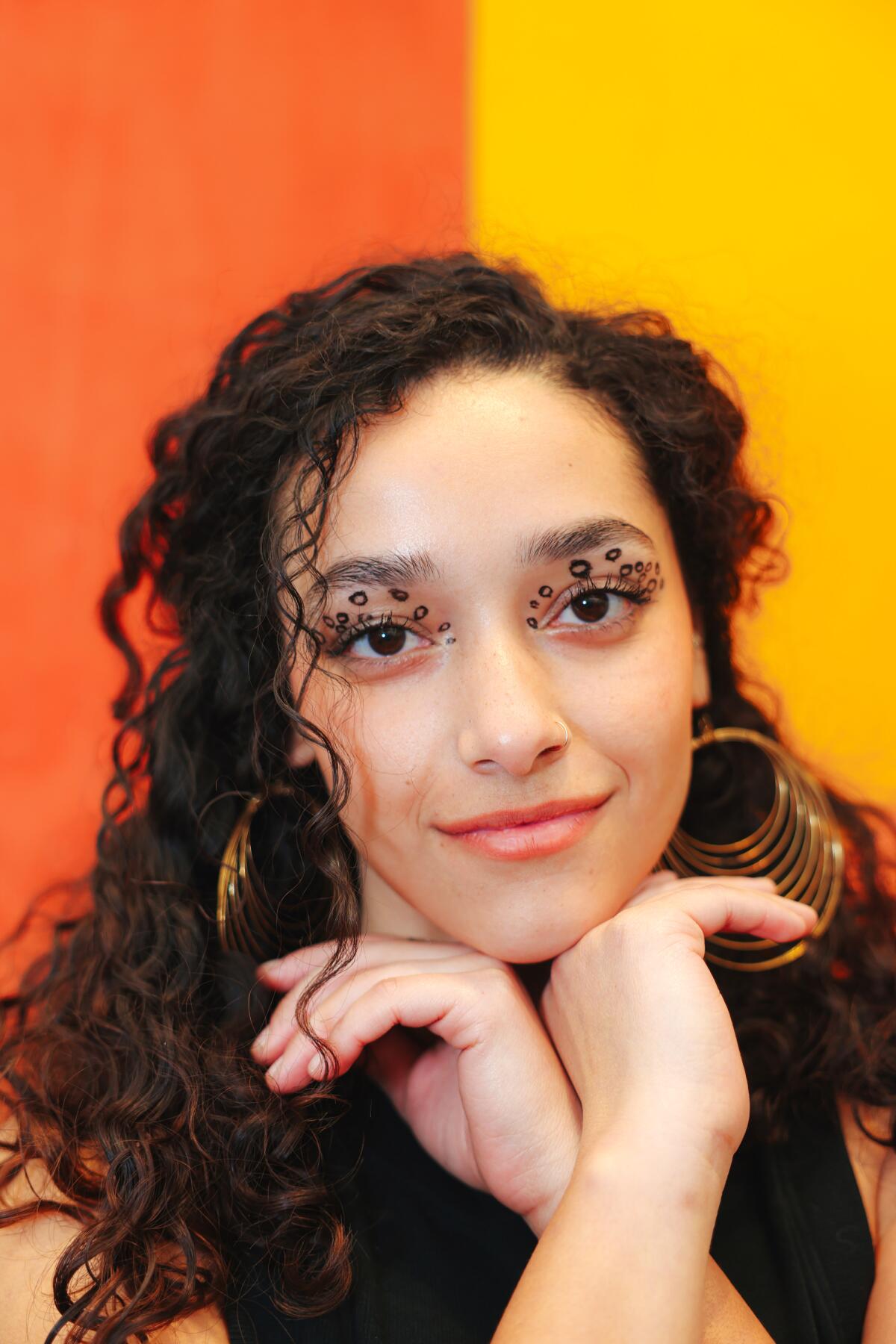
Check out Steven Vargas’ weekly newsletter L.A. Goes Out, (which features the best-of everything arts-related to do each week) to read more about Frieze events, including how to check out Paul McCarthy’s 15,000-square-foot installation, “WS White Snow.”
Writes Vargas: “The immersive installation includes an artificial forest, a replica of the artist’s family home and a seven-hour, four-channel video projection. The piece investigates American consumerism through fairy tale imagery and absurdist performances.”
Enjoying this newsletter? Consider subscribing to the Los Angeles Times
Your support helps us deliver the news that matters most. Become a subscriber.
Classical Notes
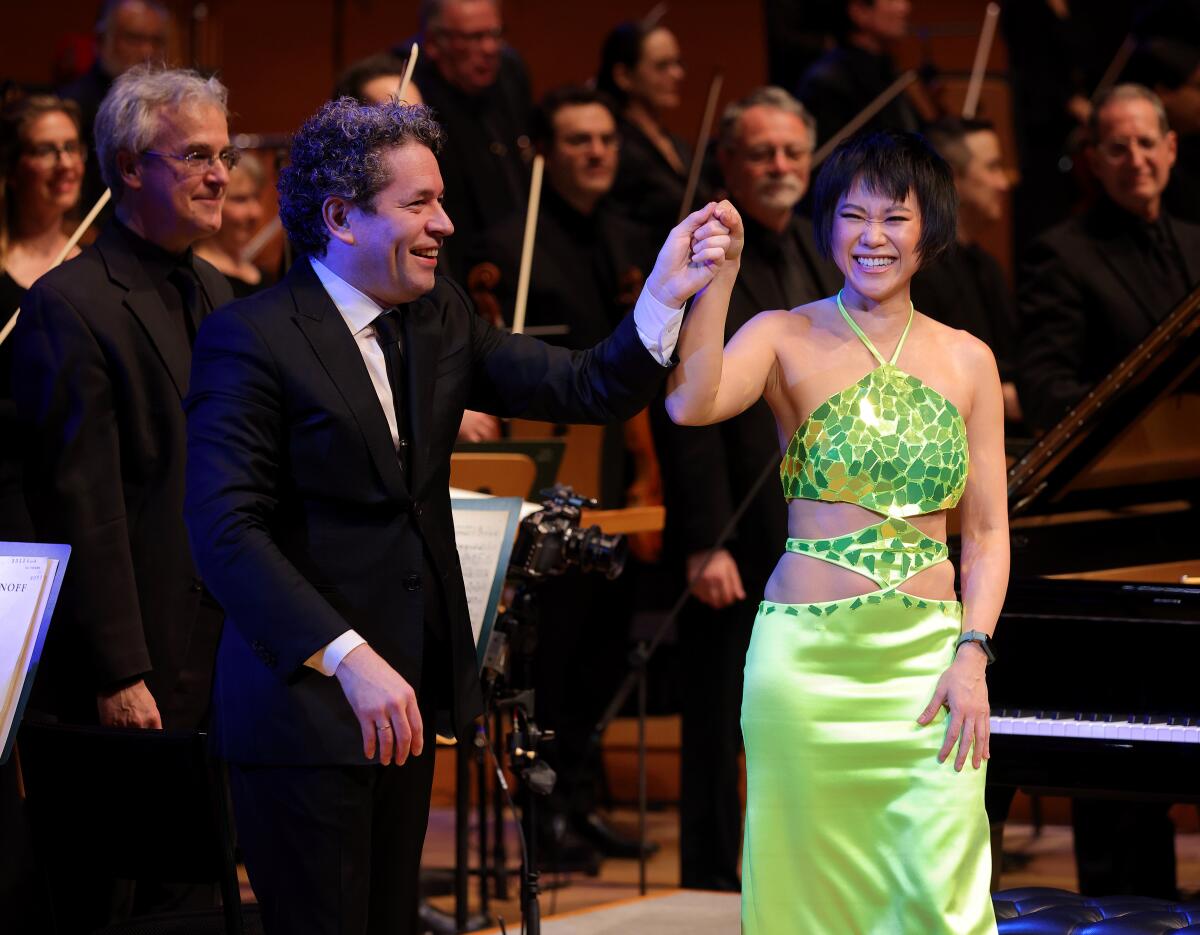
Times classical music critic Mark Swed attended weekend one of a Rachmaninoff festival held at Walt Disney Concert Hall, featuring beloved Los Angeles Philharmonic conductor Gustavo Dudamel alongside superstar pianist Yuja Wang. The former had just announced his intention to leave the L.A. Phil for the New York Philharmonic in 2026 and Swed was curious to see how his L.A. fans would react to the maestro so soon after the news broke.
“He elicited a range of emotions, from feelings of betrayal to ever more love and gratitude. And, of course, he can count on our civic pride in Los Angeles once again being a city that New York turns to for guidance, inspiration and excellence in the arts,” writes Swed, going on to praise the festival, and Wang’s performance, writing that she played with “exceptional power, depth and dazzle.”
Dudamel and Wang will continue to lead Rachmaninoff numbers this weekend at Disney Hall.
Moves

The Los Angeles County Museum of Art announced a new gift of “blockchain artworks” — 22 digital works by 13 international artists — that it describes as “the first and largest collection of artworks minted on blockchain to enter an American art museum.” The donor? The collector “Cozomo de’ Medici.” The artists represented in the gift hail from Brazil, China, England, Portugal, Germany, Canada and the U.S. The works span 2017 to 2022.
New Yorker theater critic and Pulitzer Prize–winning writer Hilton Als has been named the Huntington Library, Art Museum, and Botanical Gardens’ inaugural Hannah and Russel Kully Distinguished Fellow in the history of American art. As part of that role he will develop an exhibition and create public programs that draw on the institution’s varied collections.
Gina Duncan has become the first Black woman to be named president of a major NYC performing arts group — having been appointed the new president of Brooklyn Academy of Music. She previously served as BAM’s first vice president of film and strategic programming.
The Blanton Museum of Art at the University of Texas at Austin has announced the launch of a new Latino art initiative after acquiring 5,650 individual artworks from one of the largest private collections of Chicano and Latino art in the world — the Gilberto Cárdenas and Dolores Garcia Collection. The initiative features a new Latino art curatorial position and the opening of two new gallery spaces in March.
Passages

Julian Wasser — a photographer who captured images of some of L.A.’s most iconic stars and artists while shooting for Time magazine, has died. He was 89.
Writes Hunter Drohojowska-Philp in an obituary, Wasser “was a legend of sorts for his rangy, stylish looks and a hard-boiled wit that appealed to celebrities, musicians and artists. And he became something of a celebrity himself with his notorious staged 1963 picture of the Dada artist Marcel Duchamp playing chess with the completely nude writer Eve Babitz at the Pasadena Art Museum. That picture inspired last year’s KCET documentary, ‘Duchamp Comes to Pasadena’.”
The Dominican artist Jorge Pineda has died. He was 62.
In other news
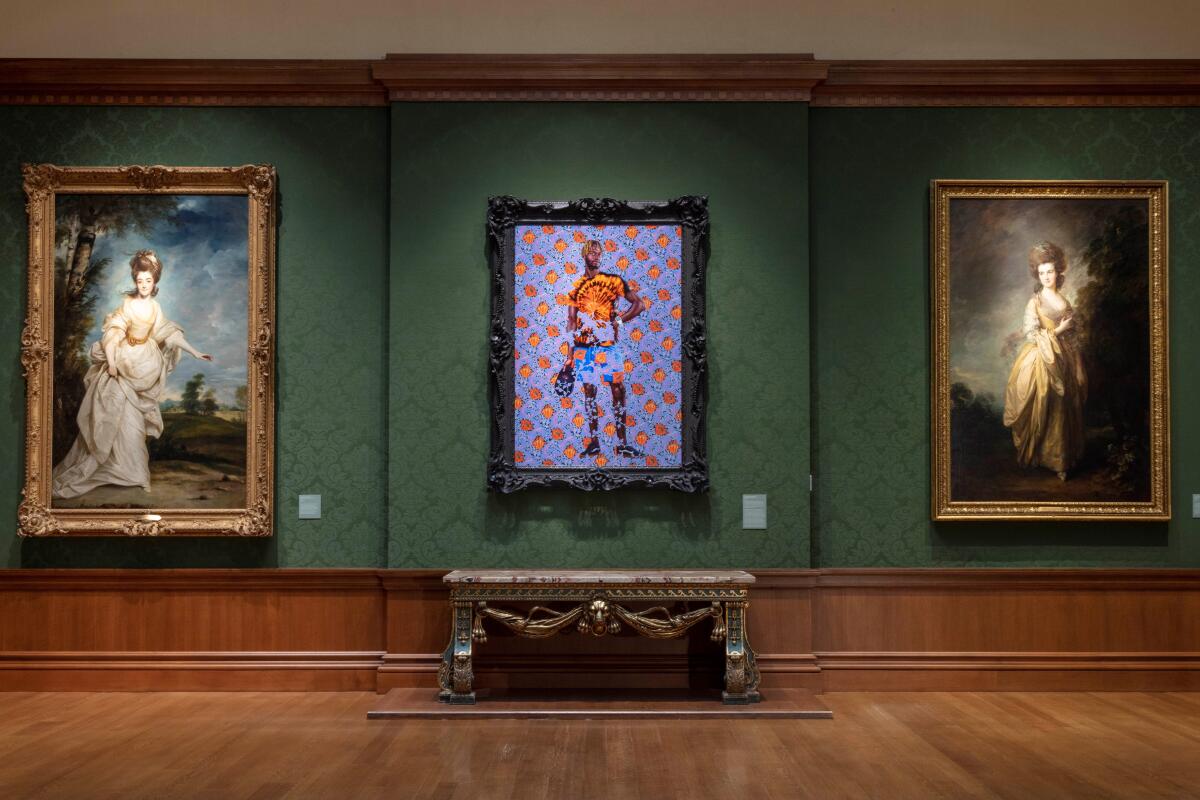
The inimitable Carolina Miranda can’t stop writing, even when she’s not here. She popped up this week with a book review of former Time magazine art critic, Richard Lacayo’s latest book, “Last Light: How Six Great Artists Made Old Age a Time of Triumph.” The book details how certain artists, including Monet, Goya and Matisse, made some of their best work in their twilight years.
Image editor Ian F. Blair has an interview with artist Ferrari Sheppard conducted on the eve of Frieze L.A., where Sheppard is showing new work.
Assistant city editor Reed Johnson headed to the California Science Center to explore an immersive third-floor gallery where “you’ll be visually and aurally transported to the Amazon rainforest, conjured up through 200 photos by Brazilian documentary photographer and photojournalist Sebastião Salgado and a Jean-Michel Jarre soundtrack.” You might leave wondering if your SoCal lifestyle is destroying the Amazon, writes Johnson.
Jessica Lynne conducts a Zoom interview with painter Kehinde Wiley as his series “Colorful Realm” prepares to open at Roberts Projects on La Brea.
Oh, and that feces-smearing incident you’ve been hearing about? It has the dance world in a tizzy.
And last but not least ...
Guess who Carolina Miranda found at the Whitney? Am I jealous? Maybe. OK, yes. Very.
The biggest entertainment stories
Get our big stories about Hollywood, film, television, music, arts, culture and more right in your inbox as soon as they publish.
You may occasionally receive promotional content from the Los Angeles Times.




